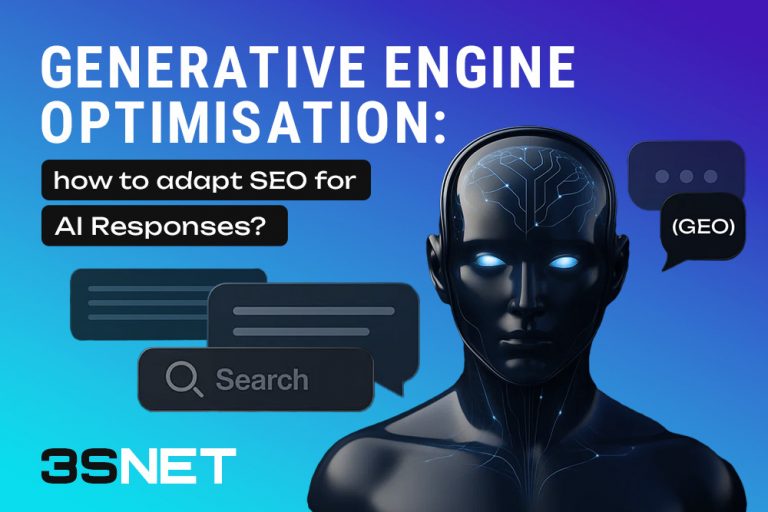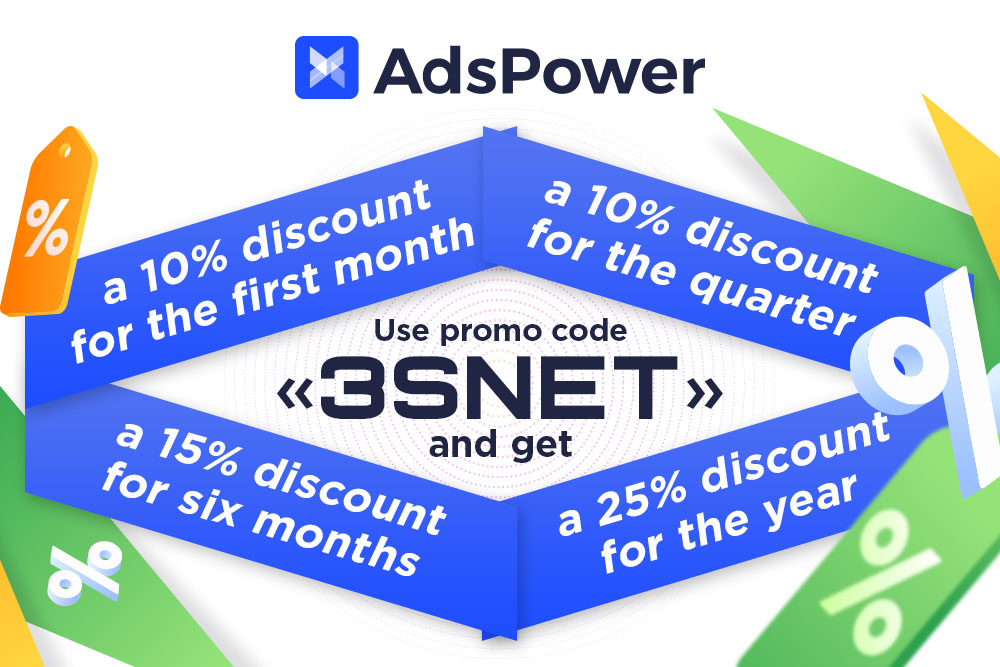
Last Updated: 28 october 2025
What is GEO?
Generative Engine Optimization (GEO) is a new strategy that adapts SEO to the modern reality, where generative AI systems like ChatGPT play the leading role. Unlike classic SEO, which aim is to rank high in search results and attract clicks, GEO is focused on ensuring that AI selects your content to formulate answers for users.
To achieve this, it is crucial to create structured, comprehensive, and easily readable content with clear headings, lists, and tables. It is also necessary to emphasize expertise and trustworthiness by indicating authors with credentials, and providing links to research and primary sources.
A key aspect involves optimizing for questions that users might ask during conversations with AI, formulating content in an FAQ format and step-by-step guides. GEO requires continuous monitoring of content citation metrics in AI responses and adapting strategies to effectively attract new audiences.
SEO vs GEO: Search Engine Optimization in 2025-26
An SEO specialist comes to a marketer and says:
— That’s it, forget about SEO. Now we’re doing GEO — Generative Engine Optimization!
The marketer asks:
— What’s that?
The SEO specialist replies:
— Well, before, we wrote texts to please Google.
Now we write texts to please… ChatGPT.
In the second half of 2025, global traffic from search engines fell by 25%. The reason is the growing popularity of AI services that provide ready-made answers, freeing users from browsing pages with results. This data is presented in a report by the analytical company Digital Content Next (DCN).
- Interest in ChatGPT has surged dramatically: news-related queries have increased by 212%, and total visits reached 47 billion.
- Google’s market share has decreased for the first time in many years to approximately 90%. Traffic to news websites has also declined.
- The “zero-click search” trend is confirmed by the fact that 69% of queries now do not require visiting a website (in 2024, this figure was 56%).
- Yandex reports that since the launch of AI answers in search, they have gained an audience of over 13 million daily users.
Undoubtedly, search and Search Engine Optimization (SEO) are undergoing fundamental changes. On 3S.INFO, explore the subtleties of how artificial intelligence affects user queries, what to do with SEO in the era of AI, how to attract an audience, and which adaptation strategy to choose.
What is Generative Engine Optimization?
Let’s start with the main point: there is an alternative to traditional SEO that will make your site’s content accessible to users through AI. And that’s GEO.
Let’s repeat again what Generative Engine Optimization (GEO) is. It’s a new search engine optimization strategy designed to adapt content to the algorithms of generative artificial intelligences (AI) like ChatGPT, Gemini, Perplexity, and other AI assistants. This includes both appearing in the AI block on search engine sites and generating responses in AI chats.
If classic SEO aims to achieve high rankings in the traditional search engine results page (SERP) and attract clicks on links, then GEO sets another goal: for the AI system to select your content as the primary source for formulating its answer and to cite it.
* SERP stands for Search Engine Results Page. In simple terms, it’s the page you see after entering a query into a search engine, like Google or Yandex.
Why is GEO Becoming Important?
- Shift in Search Paradigm. Users increasingly receive ready-made, generated answers directly within the interface of a search engine or chatbot instead of clicking through a list of links. If your website isn’t cited in these answers, you’re losing out on a significant amount of potential attention.
- Fight for Visibility. Traditional organic traffic from search engines may decrease as AI assistants evolve. GEO serves as a preventive measure to maintain visibility in this new reality.
- Building Authority. Being a source for AI represents a new level of trust and E-A-T (Expertise, Authoritativeness, Trustworthiness). This signals to both users and algorithms that you are a leader in your field.
Key Principles and Tactics of GEO
- Focus on comprehensive answers rather than keywords. Instead of optimizing for one specific query, it’s essential to create complex, structured content that fully covers the topic. AI prefers taking information from authoritative and comprehensive sources.
- Enhancing E-A-T (Expertise, Authoritativeness, Trustworthiness). This has become even more critical. It’s crucial to explicitly demonstrate expertise: indicate credentialed authors, reference research, and provide verified data.
- Structuring Data and Using Markup. The easier it is for AI to process and understand your content, the higher the chance it will utilize it. Lists, tables, clear headers (H1-H6), and semantic markup (e.g., FAQPage, HowTo) are extremely important.
- Creating Top-tier Content. AI trains on massive datasets and favors original, unique, and high-quality materials over rewrites or thin content.
- Optimizing for Direct Questions. Consider how users would phrase their queries in dialogue with AI (“How…”, “What’s better…”, “Compare…”) and create content that directly addresses these questions.
How to Distinguish GEO from Classical SEO?
The main differences between Generative Engine Optimization (GEO) and classical SEO lie in the goals, methods, and final outcomes of optimization:
| Parameter | Classic SEO | GEO (Generative Engine Optimization) |
| Main Goal | Rising to the top of search engine results (list of links) | Being selected and quoted by generative AI in responses |
| Attracting clicks to the website (traffic) | Becoming a source for AI’s response (citation, brand mention) | |
| Targeting | Search bots, keywords, text density | User intent, AI logic, quality and structure of content |
| Google ranking algorithms (PageRank, BERT) | Large language models (LLMs) such as GPT-4 | |
| Content | Built around keyword phrases and semantic core | Created based on usage scenarios and user questions (intent) |
| User Outcome | List of links where users choose a website | A complete extended answer provided by AI without following links |
| Traffic Attraction Method | Transitions from search results to the website | Traffic comes from mentions and citations in AI responses |
| Content Format | Frequently ‘SEO texts’ at the bottom of pages | Clear, structured, concise content visible above the fold |
| Important Factors | Link profile, technical optimization | Experience, Expertise, Authoritativeness, Trustworthiness (E-E-A-T) |
| Success Metric | CTR (Click-Through Rate), organic traffic | Share of Voice (share of mentions in AI responses), authority as a source |
- But let’s not panic and go back to basics! Classics are always relevant, so let’s study ” SEO Keywords: Search Queries in iGaming.”
Classic SEO is focused on improving a site’s position in traditional search engines, prioritizing keywords and links. GEO, however, shifts the approach. The main goal is to become a source trusted by generative AI, so that it includes your content in its ready-made answers. Click-through rates may decrease, but brand visibility and trust grow through citations in the responses of generative systems.
Thus, GEO is not a replacement for SEO, but a new layer of optimization relevant in the age of artificial intelligence, when users receive direct answers from AI rather than from traditional search results.
What Metrics Measure the Success of GEO?
The main metrics for measuring the success of Generative Engine Optimization (GEO) include the following key indicators:
- AI Visibility Score — how often your brand or content is mentioned in the responses of generative AIs (e.g., ChatGPT, YandexGPT). This metric reflects the visibility and trustworthiness of the brand in new digital interfaces.
- Source Citations — the number of times generative AI refers to your website or content when forming answers. This is an important indicator of the authority and relevance of the material.
- Attribution Rate — the percentage of users who visit your website after being mentioned in AI-generated responses. This metric is tracked via UTM tags and website analytics.
- Local Traffic — the number of visitors from target regions; an important metric for localized GEO promotion.
- Positions for GEO Queries — how highly your site ranks in local SERPs and AI-generated responses for geographically-oriented queries.
- Engagement Metrics — time spent on the page, depth of viewing, returns — indicators showing interest and usefulness of the content.
- Reviews and Ratings — average user rating and number of new reviews, which influence the algorithms of generative search engines.
Overall, GEO metrics reflect not only traditional search visibility and traffic, but also how effectively content is utilized by generative AIs in providing answers to users, and how many users are motivated to visit the website and engage with the brand. This helps brands adapt to new realities of digital marketing and establish a presence in the world of AI-generated responses.
What Types of Content are Best for GEO?
For successful Generative Engine Optimization (GEO), the following content formats are best suited:
- Structured Text: Clear headings (H1–H4), logically organized lists (bulleted and numbered), Q&A blocks, and tables. This format simplifies understanding of the structure and meaning blocks for generative AIs, increasing the chances of citation and inclusion in responses.
- Concise and Meaningful Blocks: Generative AIs select individual meaningful fragments rather than lengthy texts. Therefore, breaking down content into independent and understandable parts can help each segment become a standalone answer.
- Multimedia Content: Images with descriptive alt texts, infographics, videos, and audio expand the understanding of topics and present information better for models capable of handling multimodal data.
- Facts, Statistics, Quotes: Accurate and verifiable information increases trust in the content among AIs, thereby increasing the likelihood of its inclusion in generative responses.
- Markup and Micromarking: Use of structured data, proper formatting of images, lists, and tables assists AIs in quickly identifying and utilizing content.
- Adaptation to Colloquial Queries: Content should consider user intents and provide specific answers to commonly asked questions, often in FAQ or scenario-driven formats.
Thus, for GEO, it’s not just about the volume of text, but the logical structure, verifiability of data, multimedia elements, and alignment with user questions and scenarios. All these factors contribute to enhancing the visibility and citation of content in generative AI responses.
GEO Checklist for Your Website: To-Do on One Page
- Answer-first. Place 4–6 summary sentences at the top, formulated clearly enough for AI to quote them verbatim.
- Date-Stamped Facts & Primary Sources. Include regulators/policies/documentation pages; every figure must come with a date.
- Structure. Clear H2/H3 headings, lists, tables, definition/block structures (“Definition / Principles / Formats / Checklists”).
- FAQ in Colloquial Language. Cover questions like “How…”, “What to choose…”, “What’s the difference…”.
- Micromarking. FAQPage, HowTo, Article + Author/Organization with sameAs.
- Units & Entities. Use precise GEOs, regulator/platform names, abbreviations with explanations — this enhances comprehension for LLMs.
- E-E-A-T. Credentialed authors, research title/dates, editorial verification stamps, update date.
- Internal links. Link to guides, digests, glossaries — removing thin-content issues.
- LLM-Friendly Snippets. Mini-blocks titled “Key Points,” “Comparison Table,” or “Steps 1–5.”
GEO Tips from 3SNET: Tested in Practice
- Ensure your website’s information is accessible. Check if access for AI bots hasn’t been blocked in robots.txt file.
- Add a “Share with AI” button to your site. This ensures your information, along with a link, reaches AI chats, allowing users to review it thoroughly and obtain summaries. Additionally, the information enters the AI database, making it available later to other users.
GEO is the evolution of SEO. It’s a strategic shift from competing for clicks to vying for the status of a primary source for artificial intelligence. Companies and content creators need to think today not only about how people will find them, but also about how they’ll be understood and utilized by generative AI algorithms.
Note that this material has been prepared according to all GEO rules: we begin with an answer-first section and publication date, incorporate comparison tables and slides, provide exact definitions with explanations, and refer to significant research findings. The article is divided into clear blocks with H2-H3 headings. It contains internal and external links to other resources, and features an FAQ block.
FAQ
Why is GEO Important for Websites and Brands?
Users are increasingly receiving ready-made answers directly from AI, bypassing links altogether. If your brand isn’t cited in these responses, you lose both audience and credibility. GEO enables you to become a genuine source actually utilized by modern AI systems.
How Does GEO Differ from Classic SEO?
Generative Engine Optimization (GEO) concentrates on having your content chosen and cited by AI (like ChatGPT) in pre-formulated answers, rather than simply achieving high rankings in search results. SEO focuses on keywords and click-through rates, whereas GEO emphasizes expertise, structure, and data timeliness to boost “visibility in AI responses.”
What Types of Content Work Best for GEO?
Structured blocks perform best: clear headings, lists, tables, FAQs, and step-by-step instructions. AI prefers compact, isolated segments containing facts, statistics, quotes, and marked-up multimedia elements.
What Metrics Indicate GEO Success?
The key metrics are: AI Visibility Score (frequency of content mentions and citations by AI), Source Citations (number of links to your site in AI answers), and Attribution Rate (percentage of users who visit the site after a mention). It’s also important to monitor organic traffic, content engagement, and the volume of new reviews.
How to Improve the Chances of Being Featured in AI Responses?
Publish unique, verifiable materials. Highlight key answers at the beginning, use checklists, tables, FAQs, and micromarking (e.g., FAQPage, HowTo). Specify authors, dates, and primary sources to increase AI’s trust in your content.
Share it with your friends via favorite social media




























